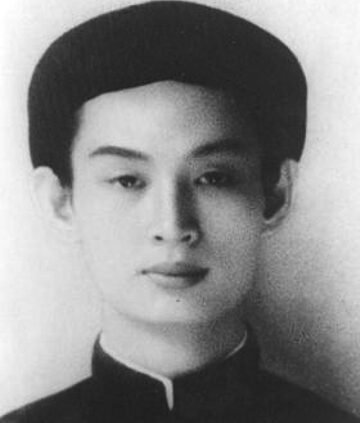Mạt Pháp
This also means the Latter Days of the Dharma in the Three Ages of Buddhism. In contrast to the first two Ages, the Former and Middle Days, the first of which people may refer to the Golden One, the Latter Days has the characteristic of a Dark Era, during which Buddhism starts to decline in...
Ngọc Hoàng
Ngọc Hoàng Ngọc Hoàng: Theo văn hóa truyền thống các dân tộc Đông Á, vị chúa tể của các tôn giáo gọi chung là Ngọc Hoàng, thay thế cho vị chúa tể thứ nhất. Theo Lão giáo, đây là vị trợ tá cho Vạn Thế Thiên Tôn, (gọi tắt là Đấng Thế Tôn), là một...
No-Action
Wu wei (traditional Chinese: 無為; simplified Chinese: 无为; pinyin: wúwéi) is a polysemous, ancient Chinese concept expressing an ideal practice of "inaction," "inexertion" or "effortless action."[a][1][2] It is a harmonious state of free flowing and unforced activity. In a political context, it also refers to an ideal form or principle of governance or government.[3] Wu wei appears as an idea as early as the Spring...
Núi Tà Lơn
Núi Tà Lơn, địa danh tiếng Việt này thuộc nước Kampuchea, Bokor, cách thành phố Kampot 10 cây số về phía Tây Nam, được coi là “Thánh địa của bậc tu hành”. Trong các thư tịch, kinh sách ghi chép Phật thầy Tây An Đoàn Minh Huyên, Huỳnh Phú Sổ, Bổn sư núi Tượng Ngô...
Prajna
Prajñā (प्रज्ञा) or paññā (𑀧𑀜𑁆𑀜𑀸) is a Buddhist term often translated as "wisdom", "insight", "intelligence", or "understanding". It is described in Buddhist texts as the understanding of the true nature of phenomena. In the context of Buddhist meditation, it is the ability to understand the three characteristics of all things: anicca ("impermanence"), dukkha ("dissatisfaction" or "suffering"), and anattā ("non-self" or "egolessness"). Mahāyāna texts describe it as the understanding of śūnyatā ("emptiness"). It is...
Wisdom
Prajñā (प्रज्ञा) or paññā (𑀧𑀜𑁆𑀜𑀸) is a Buddhist term often translated as "wisdom", "insight", "intelligence", or "understanding". It is described in Buddhist texts as the understanding of the true nature of phenomena. In the context of Buddhist meditation, it is the ability to understand the three characteristics of all things: anicca ("impermanence"), dukkha ("dissatisfaction" or "suffering"), and anattā ("non-self" or "egolessness"). Mahāyāna texts describe it as the understanding of śūnyatā ("emptiness"). It is...
Quy Y
Quy Y Taking Refuge Khi nhắc đến ý nghĩa chữ Quy Y, trong bài Pháp luận “Lời khuyên Bổn đạo” mà Đức Thầy viết tại Bạc Liêu vào năm Nhâm Ngũ (1942), Ngài giải thích như sau: …"Ngày nay đã tỉnh-ngộ quy-y cùng Phật pháp. Như vậy cửa trường-sanh bất diệt các trò đã gặp...
Sám Giảng
Sám hay Sấm có nghĩa là sám hối, tiên tri. Sấm Giảng Thi Văn của Đức Huỳnh Giáo Chủ là bộ pháp bảo, hàm chứa giáo thuyết căn bản, giúp người tín đồ PGHH hiểu biết tông chỉ và phương thức hành đạo. Đức Giáo Chủ Phật Giáo Hòa Hảo khẳng định Ngài không lập một...
Tà Lơn
Núi Tà Lơn, địa danh tiếng Việt này thuộc nước Kampuchea, Bokor, cách thành phố Kampot 10 cây số về phía Tây Nam, được coi là “Thánh địa của bậc tu hành”. Trong các thư tịch, kinh sách ghi chép Phật thầy Tây An Đoàn Minh Huyên, Huỳnh Phú Sổ, Bổn sư núi Tượng Ngô...
Vô Vi
Vô Vi Vô vi là tư tưởng của triết gia Lão Tử trong Đạo giáo. Ông nói: "Vô vi nhi vô bất vi" (無為而無不為). Tạm dịch là: Không làm gì mà không gì là không làm. Hiểu một cách nôm na là, nếu bạn không làm gì mà thấy không việc gì thì không nên làm. Thiên nhiên trời...

